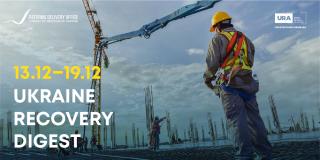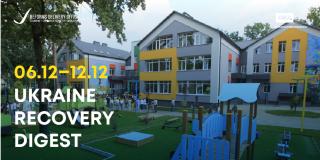The creation of a geographic data infrastructure can boost GDP by up to 0.6%. The multitude of cadastres makes things complicated now. But there's good news.
A special law on national spatial data infrastructure is expected to be passed in the coming months, and all government authorities will begin using one cartographic framework to create their own sectoral cadastres and registers, while their data will be open and interoperable.
This law will greatly contribute to transforming the State Service of Geodesy, Cartography and Cadastre of Ukraine (SSGCC) into a service-oriented agency rather than the "owner" of the system, as was the case with the State Land Cadastre until recently, — it will only be helping other government authorities to distribute spatial data.
What will SSGCC keep?
The reform of land management involves a significant reduction of directive and supervisory functions of SSGCC, except for the administration of the land cadastre per se. Moreover, land cadastral data are to become open in an unprecedented way, and most transactions involving access to cadastral data should become free of charge.
In fact, the new set of SSGCC responsibilities will include:
- maintaining the State Land Cadastre and creating a cartographic basis for it;
- coordinating the creation of the national infrastructure of spatial data and creating a national geoportal;
- conducting a standard valuation of land;
- monitoring land matters, including the land market;
- providing access to the archives of land management records, and the cartographic and geodetic fund.
Indeed, the maintenance of a national spatial data infrastructure (NSDI), which is a system used by government authorities to publish a wide range of geographically referenced information, should become a new function.
Europe and many developed countries have long had a rule that any geographically referenced data available to government authorities such as land managers, architects, foresters, environmentalists, geologists, archaeologists and others should be openly available to the public for use by anyone who needs it.
This way, quite a few very useful services can be created for businesses, government authorities, and common people.
How many cadastres are there?
The State Land Cadastre is far from being the only information system in Ukraine that shows cartographic information because, in addition to the land cadastre, the country has more than 20 industry- and agency-specific cadastres and almost a hundred of various geo-information systems created by central and local governments.
Top of the list come the town planning, forestry, and water cadastres, as well as the cadastres of territories and assets of the nature reserve fund, deposits, and occurrences of minerals etc. The geographic names registers, the address register, the register of real estate rights, the cultural heritage register and many others are operated separately.
Each of these systems keeps its own "subject-matter" information and is maintained by different agencies, not infrequently on different technical platforms, and some of them even on paper. So, it is very important to rearrange and publish all these data in one electronic format.
That is, any person that needs information about a certain area does not have to run from one agency to another, pay money for paper-based certificates, compare data herself, and all of this without any guarantee that the data are complete and accurate.
For example, Ukraine is often like a "minefield" for investors. Someone may want to build a plant, have obtained land permits and started investing when she is suddenly approached by environmentalists or archaeologists that start saying "we've found cultural heritage here" or "you've violated environmental restrictions" and stop construction work...
So, there should be no "surprises" like that. Details of restrictions should be in the public domain rather than in a bureaucrat's drawer. This directly impacts a successful development of areas, especially in the countryside.
One should proceed from the assumption that everything in our world happens on the surface of, or is connected with, the earth. That is why our key goal today is to enable individuals and business owners to get all and any spatial data, data from cadastres and registers created with public money without extra effort.
That is, any information available to the authorities about natural resources should be open and publicly available. This will largely stop corruption in the spatial planning and use of natural resources. This is the path to transparent investment processes and an improved investment climate.
Setting standards rather than gathering or keeping data
Spatial data from different sources should be not only open but also interoperable. Data are collected by different agencies in different formats and repeatedly duplicated, driving up the cost of creation and transformation.
Besides, by creating cadastres in their own way, agencies make this information disparate. That is, when we try to integrate the land and urban planning cadastres, they appear not to match in principle, and the boundary variance may be dozens or even hundreds of meters.
The objective of the national spatial data infrastructure is to set a framework where all spatial data from all agencies are interoperable. The authority responsible for maintaining NSDI should set up a technical framework for building the system. The rebooted SSGCC is likely to take up this function.
I am explicitly noting that data need not be collected from all departments into one place. The key idea behind the national spatial data infrastructure is that each authority should create and update geographic data independently, but applying uniform formats, and must make such data public.
That is, SSGCC should not be a "collector" that takes geographic data from other authorities. Instead, it should only set data exchange standards and formats and possibly provide technical assistance to other authorities. A common cartographic basis is essential that will become a kind of "foundation" on which all authorities will be building their own geographic data systems.
So, SSGCC should not control, permit, or prohibit something. It should become a purely service-oriented agency that will provide services rather than impose any administrative decisions of its own.
With the concept of NSDI, Ukraine is not "inventing the wheel." The EU has long worked on creating its spatial data infrastructure under the Directive of the European Parliament and of the Council of March 14, 2007, on the establishment of an EU Infrastructure for Spatial Information (INSPIRE), according to which all spatial data should be made public in one system under uniform rules. Access to these geographic data is enabled, among other things, through a single geoportal.
The EU–Ukraine Association Agreement does not require our country to create NSDI. But we should, if we want to follow the European trend.
Four years for implementation
A special NSDI law may be passed as early as in the next few months. It should lay down the legal framework for creating, operating, and developing this system, introducing the rules for the integration of spatial data created by different central and local governments or businesses of any form of ownership — on one geodetic and cartographic basis by complying with uniform technical regulations, and providing public access to spatial data.
Of course, NSDI cannot be created in one step — it will take a few more years for the authorities to "learn" to keep their own cadastres and registers in a new way as digital databases of geographic data. Some information systems will have to be created from scratch, including the address register, the real estate register, the geographic information system of motorways and railways, etc.
The state forest cadastre, the cadastre of territories and assets of the nature reserve fund should be improved significantly. Town planning cadastres are now being created locally, although they should ideally make up one nationwide information system.
It takes a few months to pass the law, but 3 to 4 years to deploy NSDI providing that there are adequate resources and political support from the country's top officials.
When all authorities begin to use one cartographic basis to create their own geographical data bases, they can be integrated and combined, and all people and businesses will be able to use details from cadastres and registers. This will be a crucial driver for an improved quality of governance, transparent investing activities, and a stronger trust of the public in the Government.
So, the expected reform of the land management system goes beyond the reform of one authority.
Common people and business owners as consumers of public services in general should reap the principal benefits of a reformed SSGCC system. In this case, of geographic data that describe not only land as a "land lot," but also everything on and under it.
Andrii Martyn, Senior Project Manager (Land Reform) of the CMU Reform Delivery Office, exclusively for Liga



